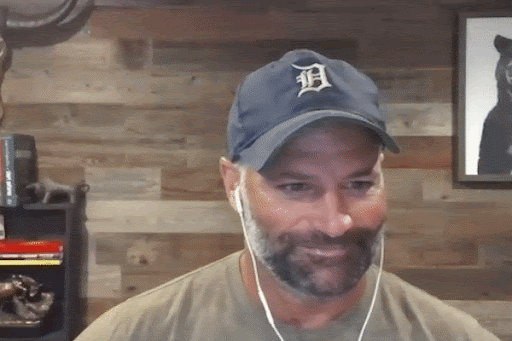I’ve said it before and I’ll say it again … stocks take the stairs up and the elevator down.
In other words, stocks can take a long time to gain value … but overextended charts tend to crash hard and fast.
This is one of the many reasons why I love trading put options … because they can provide the fastest profits in the market.
But, of course, timing is everything…
So, how do you know when a stock is about to tank? The answer lies in identifying blow-off tops…
A blow-off top is a sudden, dramatic increase in the price of a stock, followed by a sharp decline.
These tops are a raging signal that the chart is overextended and that a crash is imminent.
If you can learn to spot blow-off tops, you can position yourself to potentially make killer trades by buying puts on the underlying stock.
Take me, for example. I’ve made an entire career out of doing exactly this, earning $4 million+!
And over my many years of put trading, I’ve discovered three key indicators that can help you identify a blow-off top…
Keep reading and I’ll show you…
3 Signs of a Blow-off Top
Here are the three unmistakable signs of a blow-off top that every savvy trader should know:
Signal #1: Explosive Price Action
Blow-off tops all start the same way — with face-ripping price action. These moves usually look unassuming at first, bubbling up on modest volume…
A few days later, the share price will be several multiples higher, leaving unobservant traders to wonder how they missed the surge.
So, if you’re seeing a stock that’s surging 30% or more in just a few weeks … don’t ignore it. That’s a red flag for a blow-off top.
Inexperienced newbies look at this soaring price action and try to chase the upside.
But I want you to take the expert approach and view these moments as put-buying opportunities.
That said, you need further confirmation to diagnose a blow-off top…
Signal #2: Above-Average Trading Volume
Don’t be fooled by a big share price move alone.
To confirm a blow-off top, you need to see a massive increase in trading volume, 2-5 times higher than normal levels.
Let me explain…
Once a stock has run for several days (or weeks), sitting high on a staircase of face-ripping price action, the challenge is to determine when you think the rally will end.
If a stock’s making new all-time highs (they often are near blow-off tops), the share price valuation can be hard to gauge.
So how do you pick a price target for calling the top?! By paying attention to the trading volume…
If shares exchange hands several times more than a stock’s average daily volume, this is a flashing red light indicating that a near-term top is imminent.
Remember that stock valuations are dynamic and change with market sentiment, but a company’s total float generally doesn’t change. The total number of shares available to trade each day remains the same.
So, if the volume’s considerably higher than the daily average, we can have some sense of where the top might be because it’s a historically comparable metric.
Just look at a daily or weekly chart and mark the all-time high volume day…
When the current rally’s volume nears this previously reached level, a blow-off top could be right around the corner. Trade accordingly!
Signal #3: Round-Number Price Resistance
The third signal to look out for is a big rejection at a crucial price level.
A huge part of my trading comes down to identifying key price levels and pulling the trigger when stocks break them in either direction.
Experienced traders know that momentum stocks tend to back off near predictable, round-number price levels, such as $10, $20, $50, or $100.
Over time, it’s impossible not to see these levels. They stick out like a sore thumb. (Example: $400 on SPY!)
While a multiple of ten isn’t always necessary, it’s a double confirmation if the stock struggles at psychologically important price levels.
Focusing on these levels will help you buy your puts as close to the highs as possible.
With careful practice, spotting these levels (and therefore, blow-off tops) will become second nature.
Final Thoughts
Blow-off tops aren’t complicated, which is why they’re such an important part of my put-trading strategy.
After a decade of experience, I know how to spot a blow-off top from a mile away.
And I hope today’s lesson helps you spot them on your own.
Stay focused. Stay disciplined. And most of all, stay hungry to win.
If you look for the three signals I laid out today, you could be one big blow-off top away from a major trading breakthrough.


